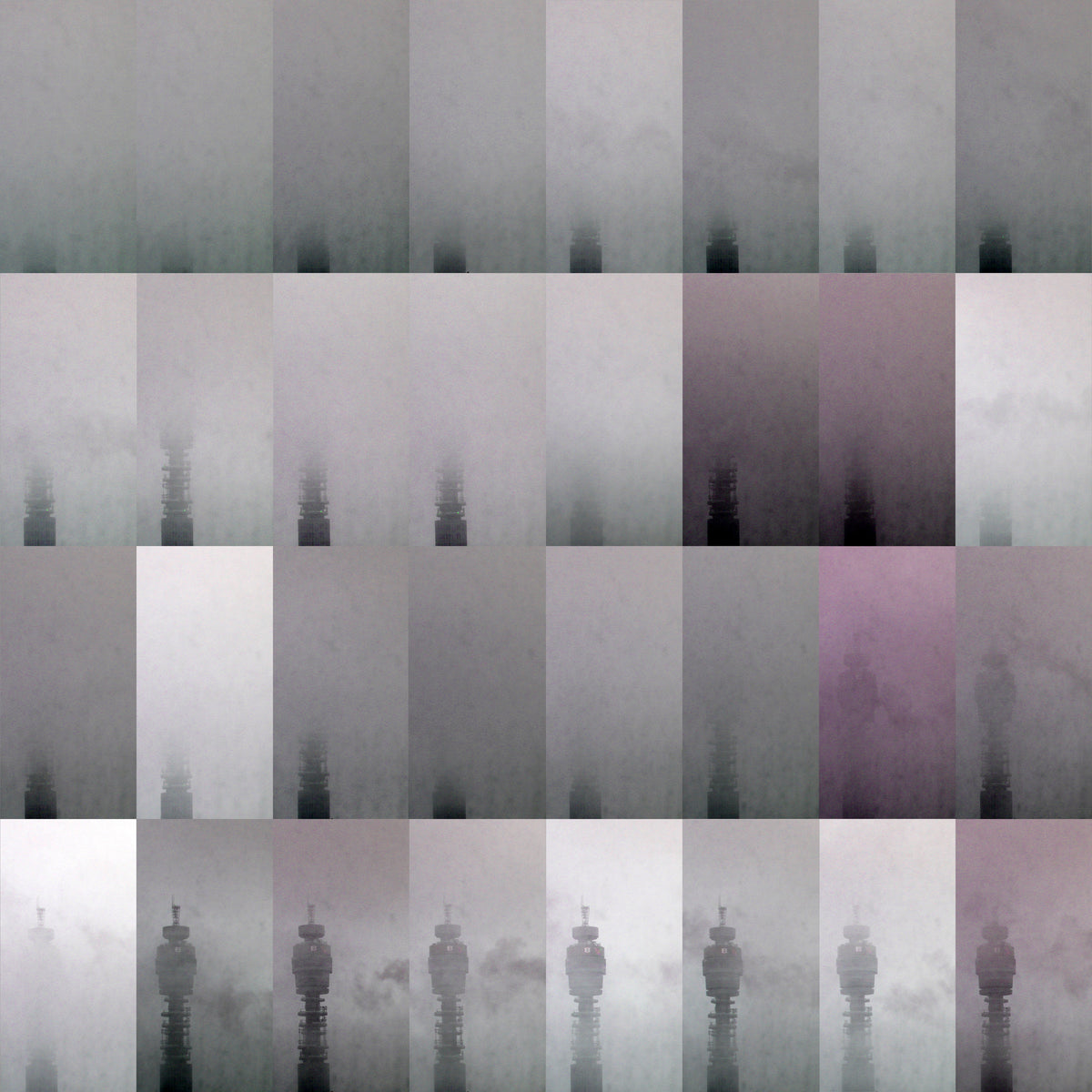Donation Vases
2019 - Sculpture (Sculpture)
103 x 54 x 14 cm, 107 x 54 x 12 cm, 108 x 54 x 11 cm
Ana Navas
Ana Navas uses humor to address formal, aesthetic, and societal conventions that are interwoven in the everyday through the normalization of gendered behaviors and style choices used to project personal and collective signifiers. In her Donation Vases she uses quotes taken from corporate coach Lois P. Frankel’s book Nice girls (still) don’t get the corner office: Unconscious Mistakes Women Make That Sabotage Their Careers (2004). The aspirational, somewhat cynical tone of the sentences – “When given a choice, sit next to most powerful person, their power will cascade over you,” “Why is it that women buy those little chains to hang reading glasses around their necks,” “If you see your reflection on a glossy surface & notice something wrong, avoid fixing it there” – reveals a particular understanding of what a professional, ambitious cis woman should look like, the persona she should project, and the type of desirable behaviors that constitute a stereotypical “successful woman” according to a capitalist morality. As a way to deconstruct these stereotypes, Navas offers this advice as “tips”- playing with the double sense of the word as counsel and gratuity – written on vases that resemble tourist souvenirs which would typically contain more naive rhetorics. The vases contain the tips “donated” by Frankel, effecting a displacement of the normalized, “universal” context they stem from and of the medium that carries them. The oscillations between the universal/modern and the local, high art and popular craft are embedded in these objects that are completed by the drawings made with steel wire illustrating a material aspect of the sentences. They appropriate a modernist, succinct aesthetics in contrast with the handmade character of the ceramic pieces. This contamination of styles is a kind of postmodernist collage that reflects on gender and its multiple, subtle ramifications.
Ana Navas’s practice deals with the vulgarization of modern art, understanding the term vulgar in its original sense of being appropriated by common people. She is interested in questioning the boundaries between low and high art and demonstrating how a modernist aesthetic language has permeated our daily lives in different ways. Her work takes the form of sculptures, paintings and videos made by using everyday objects and artisanal processes and deploying an acute sense of humor. She is interested in the contamination of forms, materials and references, materializing these inquiries into hybrid artworks. By embracing a DIY approach to artmaking which results in rather kitsch objects, she reclaims a space for production which has traditionally been used to disqualify the work of women artists.
Colors:
Related works sharing similar palette

© » KADIST
Leslie Shows
Human Quarry is a large work on paper by Leslie Shows made of a combination of acrylic paint and collage...

© » ART & OBJECT
Documenta Team Resigns Over Israel-Hamas Conflict | Art & Object Skip to main content Subscribe to our free e-letter! Webform Your Email Address Role Art Collector/Enthusiast Artist Art World Professional Academic Country USA Afghanistan Albania Algeria American Samoa Andorra Angola Anguilla Antarctica Antigua & Barbuda Argentina Armenia Aruba Ascension Island Australia Austria Azerbaijan Bahamas Bahrain Bangladesh Barbados Belarus Belgium Belize Benin Bermuda Bhutan Bolivia Bosnia & Herzegovina Botswana Bouvet Island Brazil British Indian Ocean Territory British Virgin Islands Brunei Bulgaria Burkina Faso Burundi Cambodia Cameroon Canada Canary Islands Cape Verde Caribbean Netherlands Cayman Islands Central African Republic Ceuta & Melilla Chad Chile China Christmas Island Clipperton Island Cocos (Keeling) Islands Colombia Comoros Congo - Brazzaville Congo - Kinshasa Cook Islands Costa Rica Croatia Cuba Curaçao Cyprus Czechia Côte d’Ivoire Denmark Diego Garcia Djibouti Dominica Dominican Republic Ecuador Egypt El Salvador Equatorial Guinea Eritrea Estonia Eswatini Ethiopia Falkland Islands Faroe Islands Fiji Finland France French Guiana French Polynesia French Southern Territories Gabon Gambia Georgia Germany Ghana Gibraltar Greece Greenland Grenada Guadeloupe Guam Guatemala Guernsey Guinea Guinea-Bissau Guyana Haiti Heard & McDonald Islands Honduras Hong Kong SAR China Hungary Iceland India Indonesia Iran Iraq Ireland Isle of Man Israel Italy Jamaica Japan Jersey Jordan Kazakhstan Kenya Kiribati Kosovo Kuwait Kyrgyzstan Laos Latvia Lebanon Lesotho Liberia Libya Liechtenstein Lithuania Luxembourg Macao SAR China Madagascar Malawi Malaysia Maldives Mali Malta Marshall Islands Martinique Mauritania Mauritius Mayotte Mexico Micronesia Moldova Monaco Mongolia Montenegro Montserrat Morocco Mozambique Myanmar (Burma) Namibia Nauru Nepal Netherlands Netherlands Antilles New Caledonia New Zealand Nicaragua Niger Nigeria Niue Norfolk Island Northern Mariana Islands North Korea North Macedonia Norway Oman Outlying Oceania Pakistan Palau Palestinian Territories Panama Papua New Guinea Paraguay Peru Philippines Pitcairn Islands Poland Portugal Puerto Rico Qatar Romania Russia Rwanda Réunion Samoa San Marino Saudi Arabia Senegal Serbia Seychelles Sierra Leone Singapore Sint Maarten Slovakia Slovenia Solomon Islands Somalia South Africa South Georgia & South Sandwich Islands South Korea South Sudan Spain Sri Lanka St...

© » KADIST
Euan Macdonald
2010The video 9000 PIECES by Euan Macdonald was filmed at a musical instrument factory in Shanghai where 90 percent of the pianos that they manufacture are exported around the world, and only 10 percent are “finished” and can be labeled “Made in the US (or) Europe.” The video captures an intricate network of mechanisms as they interact with each other, their rhythmic movements resulting in an intense choreography and a cacophony of metallic sounds dramatized by Macdonald’s editing...

© » ARTS EQUATOR
Podcast 62: Unpacking the Contemporary in Traditional Dance | ArtsEquator Thinking and Talking about Arts and Culture in Southeast Asia Articles July 23, 2019 Duration: 47 min Podcast host Amin Farid alongside fellow dance scholars Elizabeth Chan and Aparna Nambiar discuss their respective fields of study within traditional dance...

© » THEARTNEWSPER
A fragile resource: new Pattani Archives space offers rare glimpse into world of influential Indian royal family Art market Museums & heritage Exhibitions Books Podcasts Columns Technology Adventures with Van Gogh Search Search Archives news A fragile resource: new Pattani Archives space offers rare glimpse into world of influential Indian royal family The venue will bring together photographs, works of art, political documents and more that showcase art in the country as it transitioned through independence Malcolm Cossons 13 December 2023 Share Photographs discovered in the Pattani archives feature Mahatma Gandhi Courtesy of Pattani Archives Avni Pattani recalls the moment, in 2020, when she found masses of papers piled inside a house once owned by a family member in Bhavnagar in Gujarat, on the northwestern coast of India...

© » ARTFORUM
Virginia Museum of Fine Arts Returns 44 Artifacts to Egypt, Italy, and Turkey – Artforum Read Next: LOUVRE RAISES TICKET PRICES BY NEARLY 30 PERCENT Subscribe Search Icon Search Icon Search for: Search Icon Search for: Follow Us facebook twitter instagram youtube Alerts & Newsletters Email address to subscribe to newsletter...

© » SLASH PARIS
Romain Best — Coulissements par frictions — Frac île-de-france, le Plateau — Exposition — Slash Paris Connexion Newsletter Twitter Facebook Romain Best — Coulissements par frictions — Frac île-de-france, le Plateau — Exposition — Slash Paris Français English Accueil Événements Artistes Lieux Magazine Vidéos Retour Romain Best — Coulissements par frictions Exposition Installations, sculpture, techniques mixtes Romain Best, Coulissements par frictions, 2023 © Romain Best Romain Best Coulissements par frictions Encore 27 jours : 9 novembre 2023 → 7 janvier 2024 Présenté dans la Project Room du Plateau, Romain Best est né en 1995 à Lyon...

© » WHITEHOT
Whitehot Recommends: Hunter Amos at Anna Zorina Gallery advertise donate post your art opening recent articles cities contact about article index podcast main February 2024 "The Best Art In The World" "The Best Art In The World" February 2024 Whitehot Recommends: Hunter Amos at Anna Zorina Gallery Installation view...












